Painting Perceptions is celebrating its tenth year of existence this year. With that in mind, I am about to reactivate Painting Perceptions after a long hiatus during which I needed to concentrate on my own paintings for my upcoming solo show. I have some fantastic new interviews in the works soon to be published and I will return to posting on a regular basis once the show is over.
I’d like to take this opportunity to say a few words about my upcoming show at the Prince Street Gallery in NYC. The exhibition starts May 21 and goes through June 15, 2019. The opening reception is Thursday May 23rd, 5 – 8pm. I will also be giving an informal artist talk and reception on Saturday June 1st from 4 – 6pm at the gallery. (530 West 25th Street 4th floor, NYC)
Some readers might be puzzled by the new direction my paintings have been taking, that running a site on Perceptual Painting would at least to some degree require the editor to be a committed perceptional painter. For most all of my life as a painter I’ve worked primarily from life and I continue to have a deep love for it. However I recently arrived at a point where I wanted to experiment with working from imagination and invention. I wanted to put a greater focus on thinking about new ways to make a picture that are more in line with my current interests. I don’t plan on abandoning observational painting and plan to paint outdoors again in the near future but for now painting in the studio is where I’m concentrating my attention.
I’ve long had a contrarian streak running through me and almost as soon as I hear a new rule or doctrine related to art my mind jumps to wanting to know the exceptions to the rule and the opposing school of thought and then back again. Many times I’ve turned this contrarianism to my own ways of working but certain aspects resisted change – one of which was the importance of always needed to have the work based on something I saw. But after the 2016 elections and not being able to do anything about the terrible things going on in the world I felt that at least I had some control over what I could do with my own paintings. I decided to open everything up for re-examination.
Painting likely has almost as many schools of thought as there are painters. Perceptual painting certainly isn’t exempt from this phenomenon and seeing all the ways people paint is inspiring on many levels. Despite my own convictions, I’ve tried to avoid taking any partisan stands on this site with regard to modern painting from observation and attempt to champion the many forms painting perceptions can take. Having so many different kinds of painters featured on this site has helped me to grow as a painter, not just learning new tips and techniques–I’m perfectly happy for the old masters to continue to keep their secrets hidden–what has been more valuable to me is learning about all the different ways painters discover who they are as a painter. How they find their voice. I did some soul searching and decided to experiment with a range of subjects and approaches that were at times almost the opposite of what I had previously been doing. The essay below, from my catalog, begins to explain a little about what I’ve been doing over the the past year or so.
- (for anyone wishing to get this 24 page, 8.5 x 11 inch catalog – while the show is up they will be available for free at the gallery – otherwise you can view and download a pdf here
or I can mail one to you if you send me enough to cover the postage ($1.75 in the US) and perhaps consider a small donation via the donate button on the homepage to help this site and the printing costs – please email me – larry@paintingperceptions.com)
Some time in the next month or so I plan to have an online video version of my artist talk that explains more in depth the issues and processes I’ve been involved with.
The Catalog essay
The first stanza of William Blake’s famous poem, Auguries of Innocence, is the exhibition’s theme for these oil paintings completed over the past two years.
To see a World in a Grain of Sand
And a Heaven in a Wild Flower
Hold Infinity in the palm of your hand
And Eternity in an hour
The 2016 United States presidential election did not augur well for our future. As a way of coping with our uncertain times, I started to explore imagination-based imagery, which I felt could offer a greater range of expression and subject matter than my previous observation-based landscapes. Perceptual painting remains very important to my work but the works in this exhibition are all studio inventions. Famous European artists like Nicolas Poussin and Tintoretto are said to have made stage sets and arranged wax or clay maquettes to study composition and lighting for paintings. Computers today can easily replicate this practice.
After graduate school at Boston University, I supported my painting working as a nurse. In 1999, I left nursing, taught myself 3D computer animation and worked as a medical animator. Using 3D software is rarely associated with traditional painting as it is considered more relevant for entertainment or corporate industries for their more commercial aesthetics. As a result, its use is often considered antithetical to fine art making. However, I came to see it as another useful tool (with a rather steep learning curve) in the painter’s visualization process. Like Tintoretto, I used it to observe the multiple compositional possibilities and different viewpoints of a subject, such as how an arrangement of forms might look like from above or below. I found the process of digitally sculpting and painting forms highly engaging but this calculating technical approach lacked the adventure and emotions of painting onsite. However, being able to control virtually any aspect of form, light, texture, color, and atmosphere to make a world of your own in which to paint, just by looking at a high-resolution monitor, was very compelling. Once the computer imagery was finished and the basics of the scene painted onto the canvas, I turned off the computer and paint from memory or imagination. This process was critical as it allowed the painting to move forward independently from the digital source, let a new life evolve from the needs of the oil painting, and it was not constrained to the original digital concept. The finished painting often looks very different from the original source. Painting landscapes or still life can be a similar process where the scene’s visual information can be summarized and edited. In this way, the painting becomes more important to look at than the motif and conveys feelings better.
Initially, I wanted to make paintings that were inspired by early modernist sculpture, like that of Jacques Lipchitz and David Smith. I digitally sculpted arrangements of forms like those seen in the paintings, Spinning in His Grin, Repotting Time, and The Stonecutter’s Grotto. However, I changed directions after discovering Dr. Gary Greenberg’s book, A Grain of Sand, with his photographs of highly magnified sand grains. The book showed the incredible range of translucent colors and shapes in sand that eons of tumbling forces have sculpted into exciting potentials for expression and abstraction. Biogenic particles, like shell fragments and microscopic foram, are common components of sand and their unusual shapes can suggest anthropomorphic qualities or moods. I modeled and sculpted my own sand grain-like forms and arranged them as if I was blocking figures out on a stage set or setting up a still life. Making a verifiably accurate representation of any particular sand grain was never a goal–instead, I wanted to set up a scene that might give life to a painting. I asked myself how the sand grain could play a role in the painting’s visual drama of color, light, and shape. Couldn’t this particular microscopic grouping of sand have once happened somewhere during the eons amongst the quintillions of sand grains on our planet?
It is interesting to note that sand, one of the most common materials on earth and critical to our civilization, is not infinite. Computers and cell phones are made possible through the use of silicon sand. Sand helps build the glass, concrete, and asphalt roads for our cities. Increasingly, alarms have sounded over the shortage of sand used in construction and even the sand on our beaches is becoming exhausted in many places. Mountains erode and become grains of sand just as civilizations eventually crumble. No matter how big we are, we all return to dust. The macrocosm is seen in the microcosm like a fractal. Infinity can be held in the palm of your hand. In ancient Rome, augurs often made important political and military decisions. These officials had a priest-like status and interpreted the gods’ wishes from watching the random movements of birds. Eventually, the Romans figured out that augurs and their auguries were bogus and started to trust their own decisions. This show’s title, Auguries, only portends the future direction my painting is taking, and, regretfully, lacks any divination from birds or otherwise for our future. However, viewers are encouraged to look closely at these grains of sand and make their own predictions.
-Larry Groff

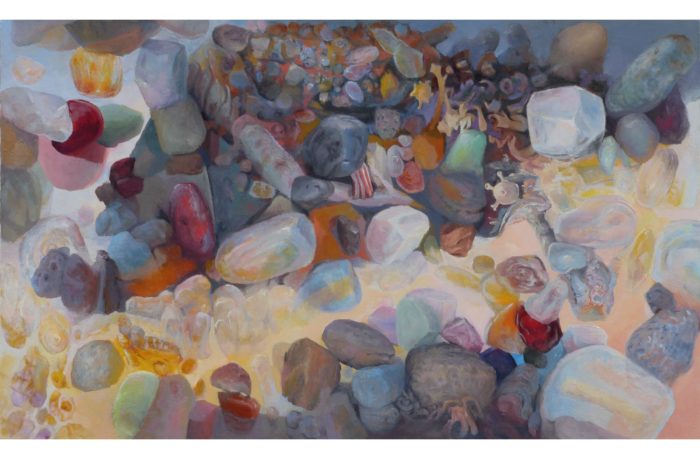
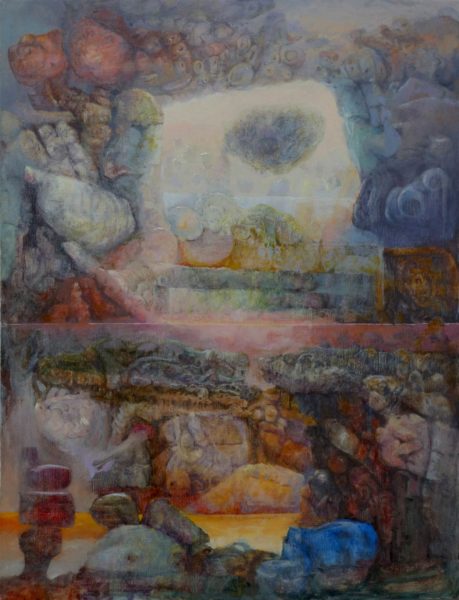
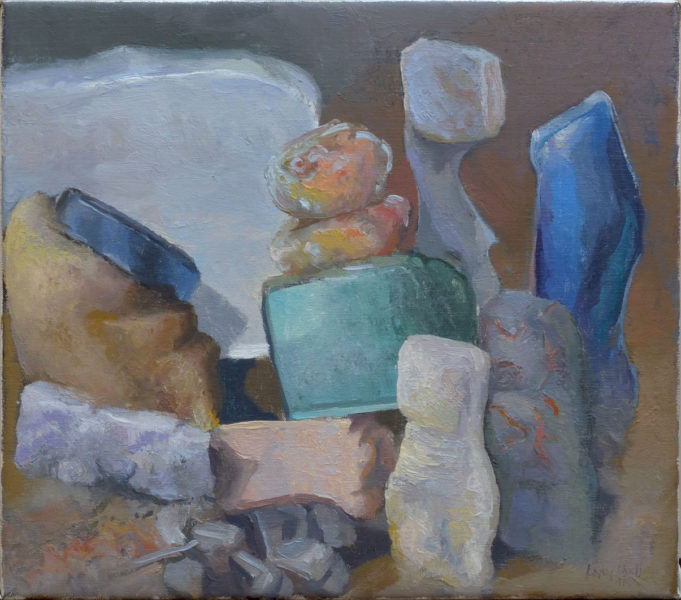
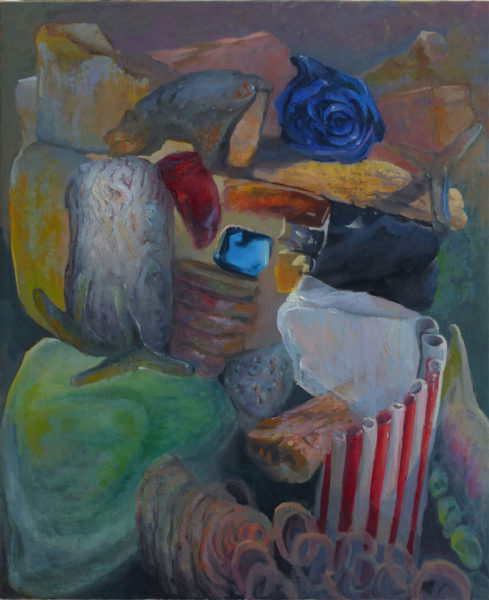
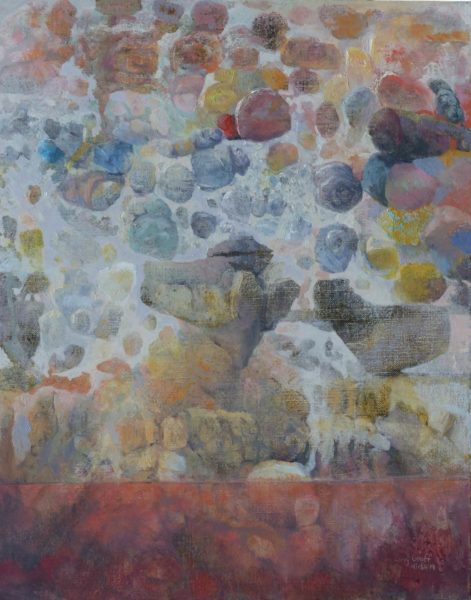
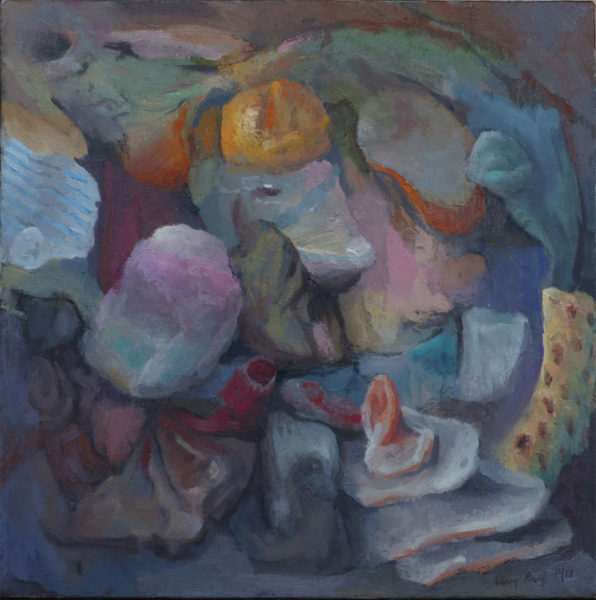
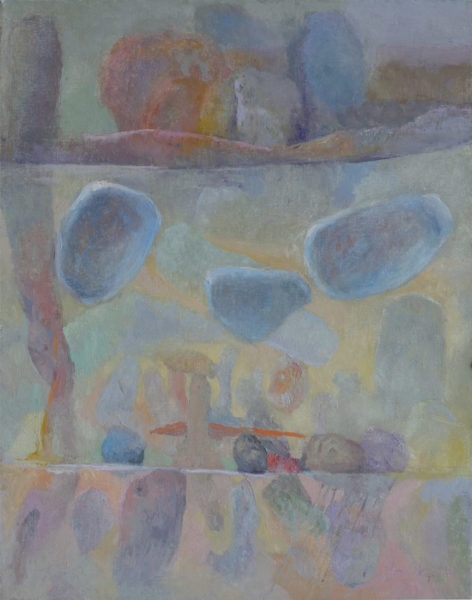
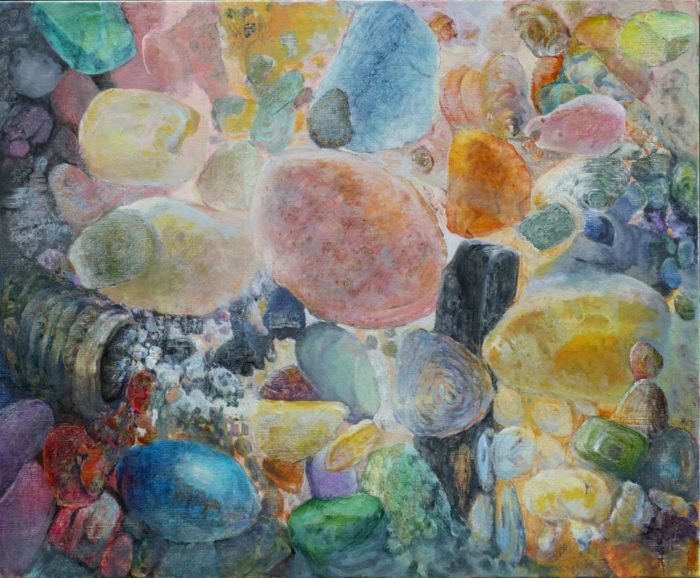
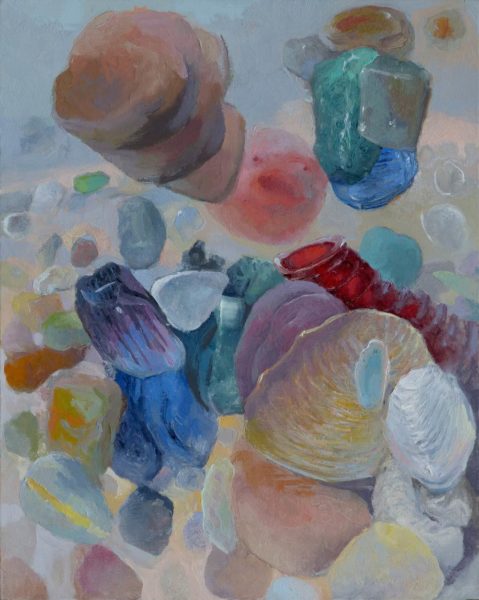





Those are buoyant, hopeful paintings Larry, beautifully done!
Thank you Randall, much appreciated.
Welcome back, you were missed. Lovely rich colours in these beautiful paintings. Like you, my painting is also going through a changing process but in the other direction, out of the studio.
Thank you Dennis very pleased to hear your response to them.
Fantastic Larry
Looking forward to the opening and the talk
John, I will look forward to meeting you in person!
Larry,
I like these and admire what you are doing. As older artist , I see myself and friends, arriving at the unstoppable need for change and newness, whether brought on by fatigue or boredom, or need to retreat into the honest self we become hopefully.
These works have terrific color and depth and remind me of your early work, not by subject but the feeling of mystery and the pathways of light . You are doing what you need to do with stamina and intuition. Thank you for giving us your visual heart.
Valerie Cordaro
Thank you Valerie, your comment are very kind and means a lot to me, especially coming from such a good painter as yourself. It is heartwarming to hear that someone has looked at some of my earlier work and thought to comment about it! This new work is still embryonic and uncertain of what its eventually mature form will take – but I am encouraged to see people such as yourself are responding to them.